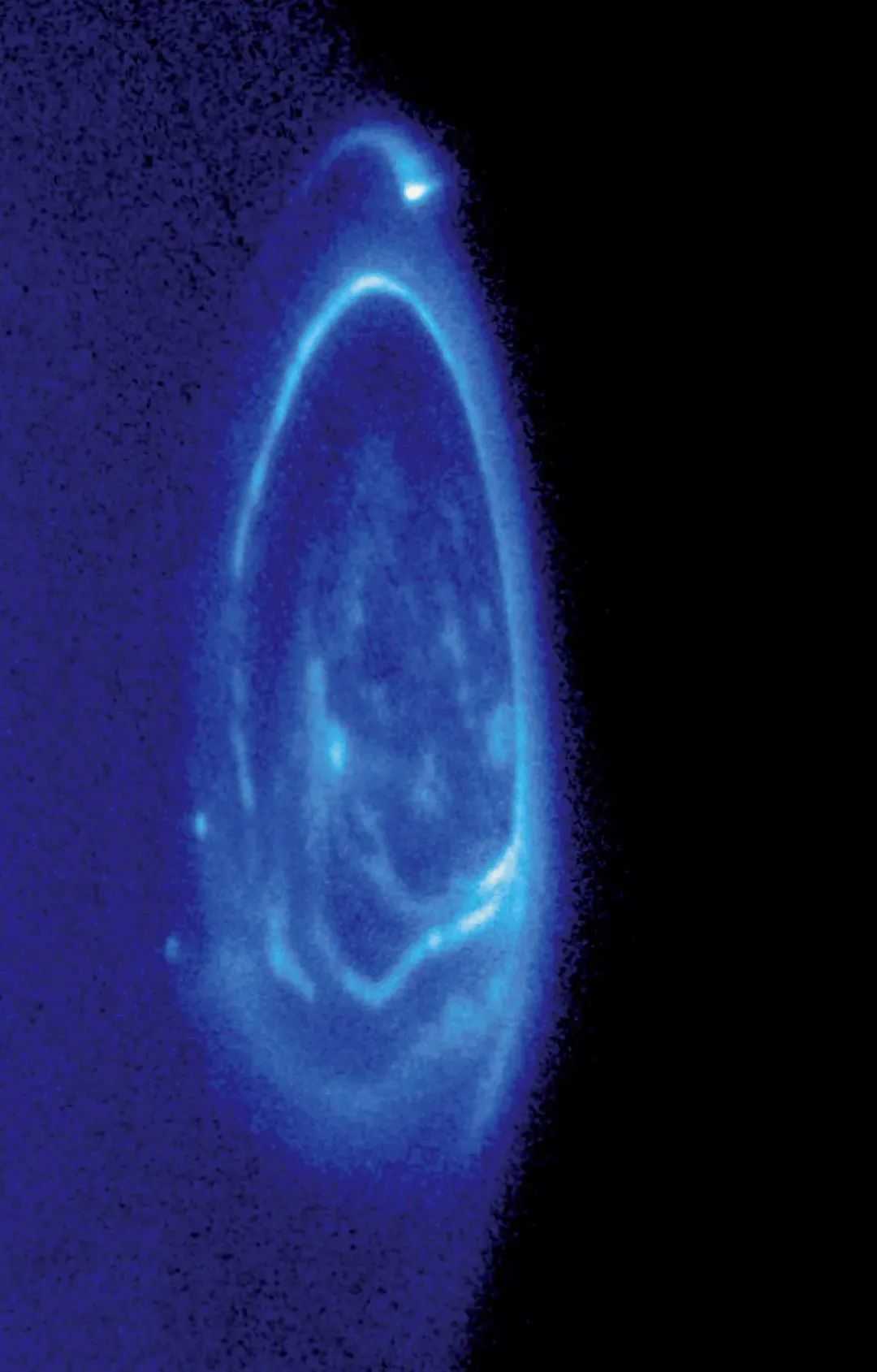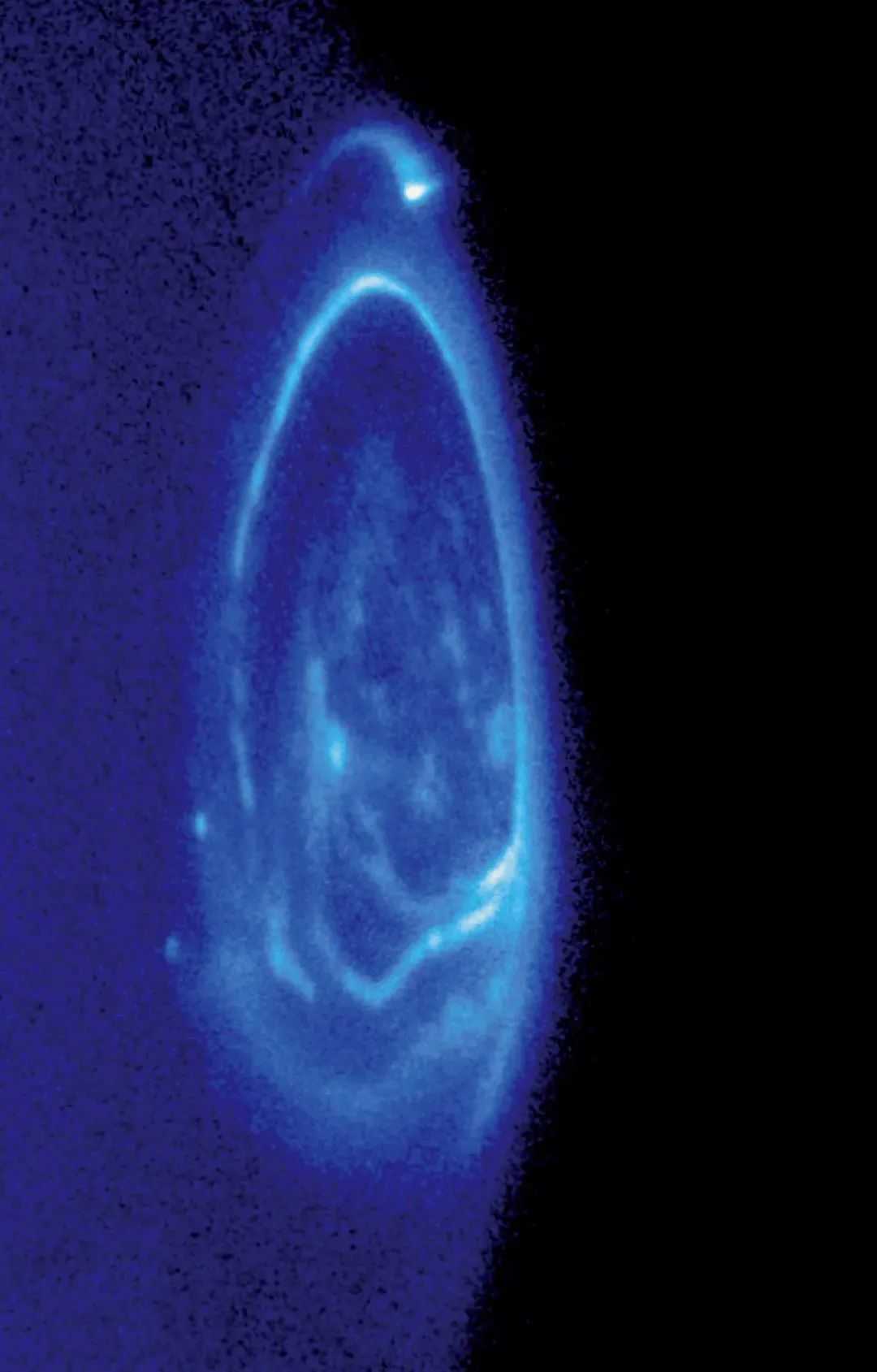Jupiter's Auroras: Ultraviolet Rings Illuminating the Gas Giant's Poles
A stunning image captures Jupiter’s auroras—dazzling ultraviolet (UV) rings encircling the planet’s north pole—revealing the dynamic interplay between its powerful magnetic field and its retinue of moons. These celestial light shows, invisible to the naked eye but vivid in UV wavelengths, offer a window into the extreme physics governing the solar system’s largest planet.

Source: Images from the Internet, if there is any infringement, please contact the removal of
The prominent UV rings around Jupiter’s north pole are generated by charged particles accelerated along the planet’s magnetic field lines. Unlike Earth’s auroras, which are primarily fueled by solar wind particles, Jupiter’s auroras derive much of their energy from its own moons, particularly the volcanic moon Io. Io’s intense volcanic activity releases plumes of sulfur and oxygen ions into space, which are rapidly ionized and trapped by Jupiter’s magnetosphere. These ions are then accelerated along magnetic field lines toward the planet’s poles, colliding with atoms in Jupiter’s upper atmosphere and producing the glowing UV rings. The result is a complex interplay of light, with bright spots and streaks marking regions of particularly intense particle bombardment.
In the image, discrete bright spots within the auroral rings stand out, tracing the magnetic field lines connecting Jupiter to its large moons—Io, Europa, Ganymede, and Callisto. Each moon creates a unique "footprint" in the auroras: for example, the connection to Io is particularly strong, producing persistent bright spots that shift as the moon orbits the planet. These moon-driven auroral features are a testament to Jupiter’s role as a gravitational and magnetic powerhouse, shaping the environment of its entire moon system. Observations of these phenomena, often made by space telescopes like Hubble or the Juno spacecraft, help scientists understand the dynamics of Jupiter’s magnetosphere, the composition of its upper atmosphere, and the interaction between planets and their moons.
Jupiter’s auroras are not only a scientific marvel but also a reminder of the diverse ways celestial bodies generate light. While Earth’s auroras are fleeting and colorful, Jupiter’s UV rings are a constant, intense display of cosmic energy. Studying these phenomena deepens our understanding of planetary magnetospheres, space weather, and the transfer of material between planets and their moons. As missions like Juno continue to explore Jupiter, they unravel the mysteries of these glowing rings, shedding light on the complex mechanisms that make the gas giant a dynamic and ever-surprising world.
-------- END --------






